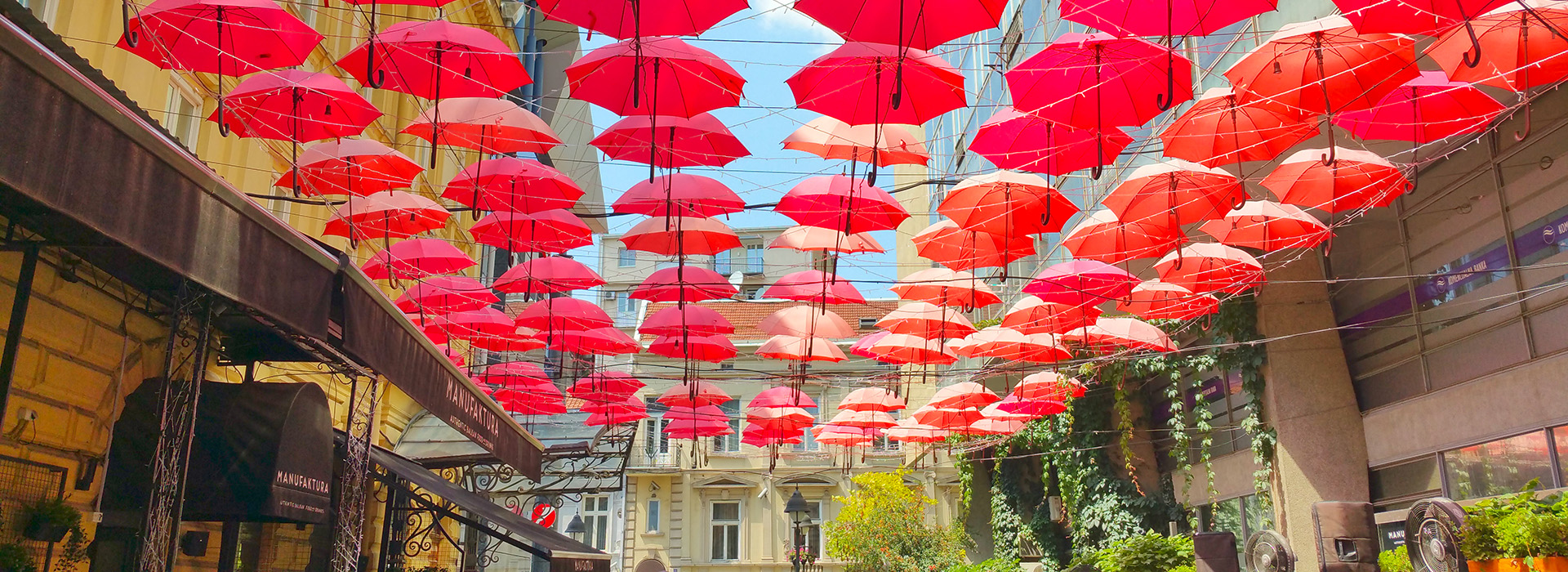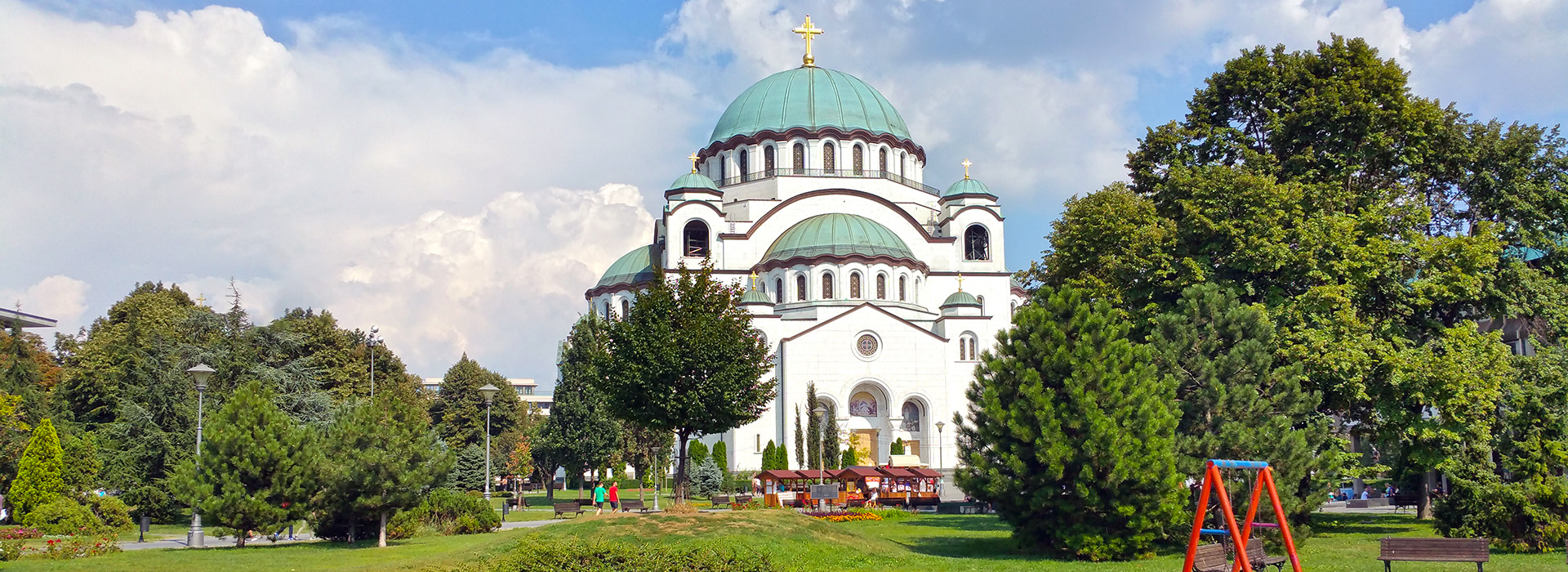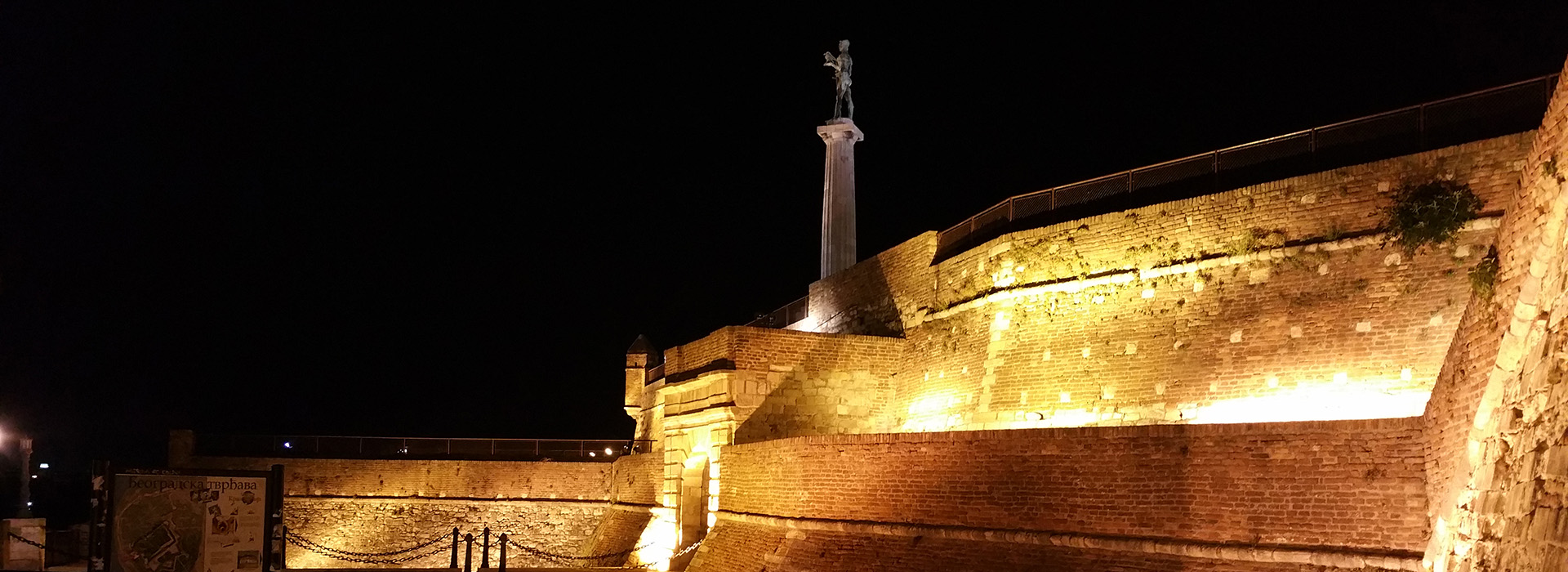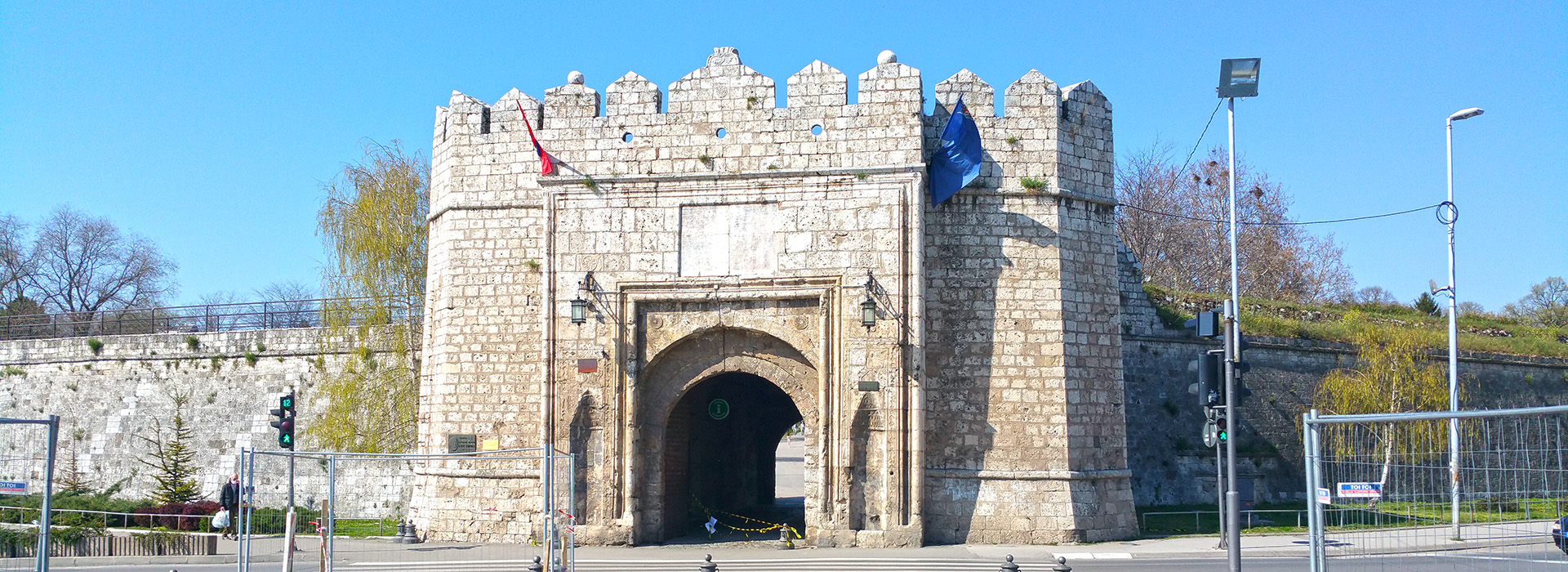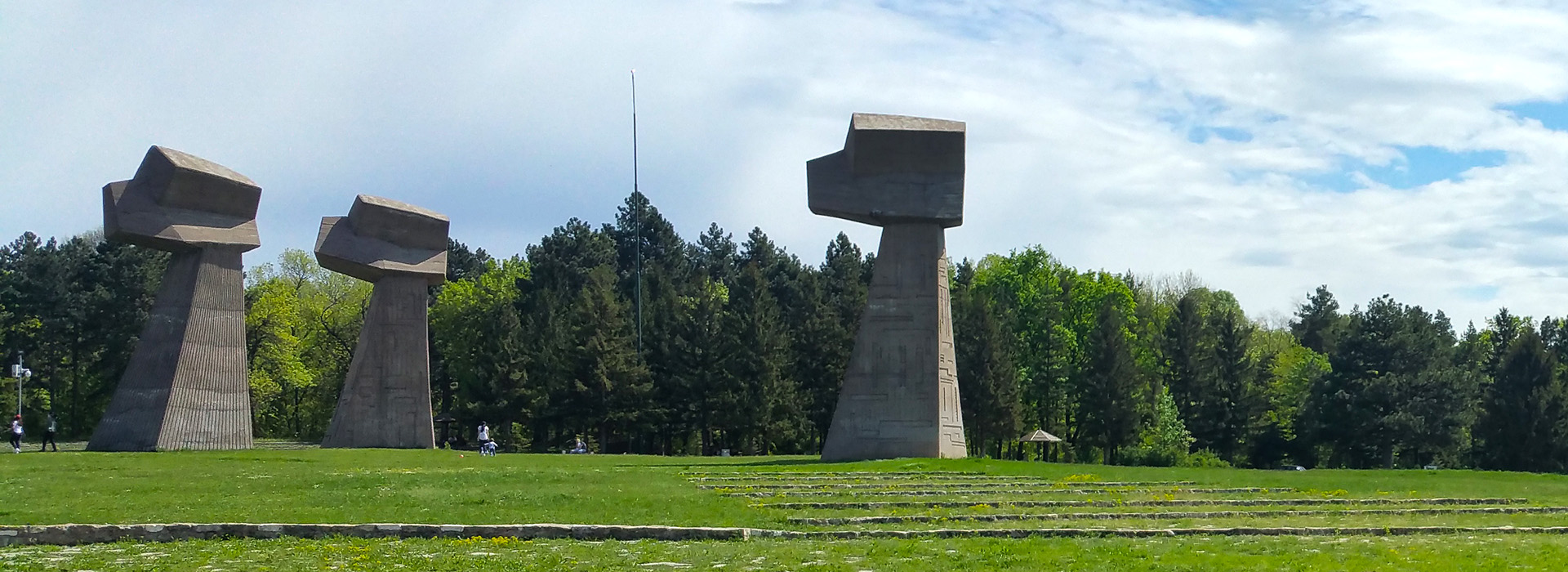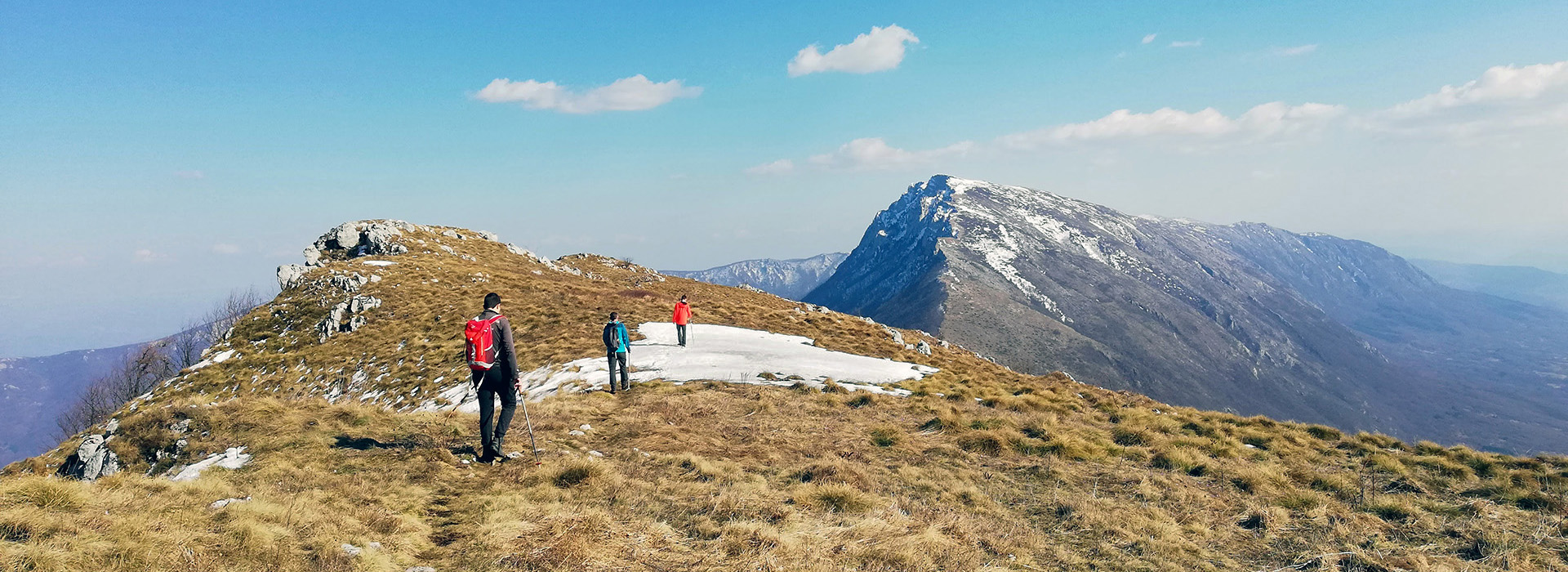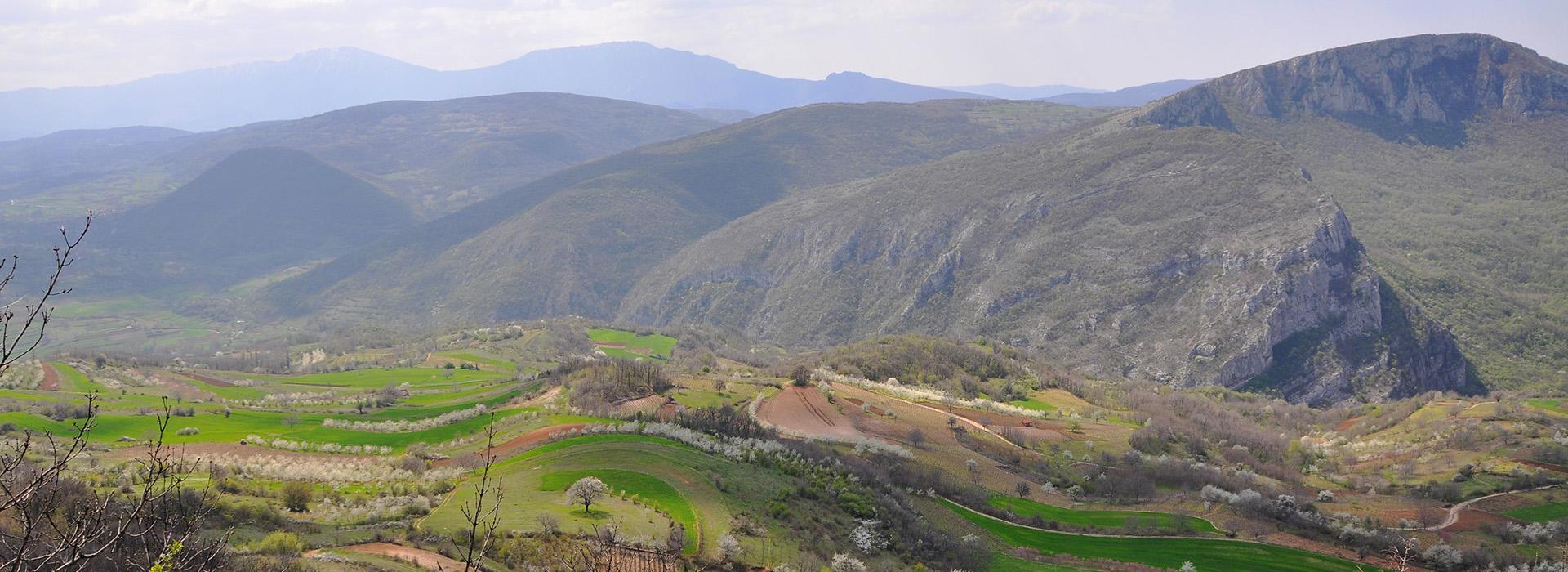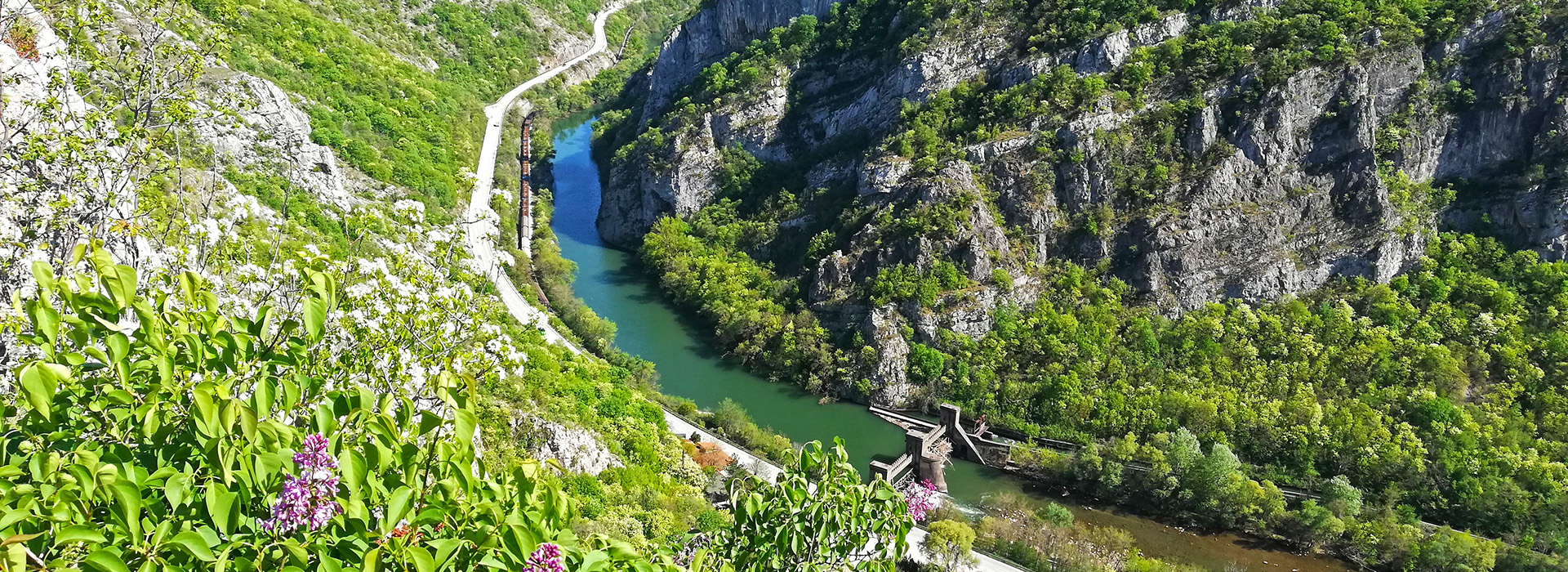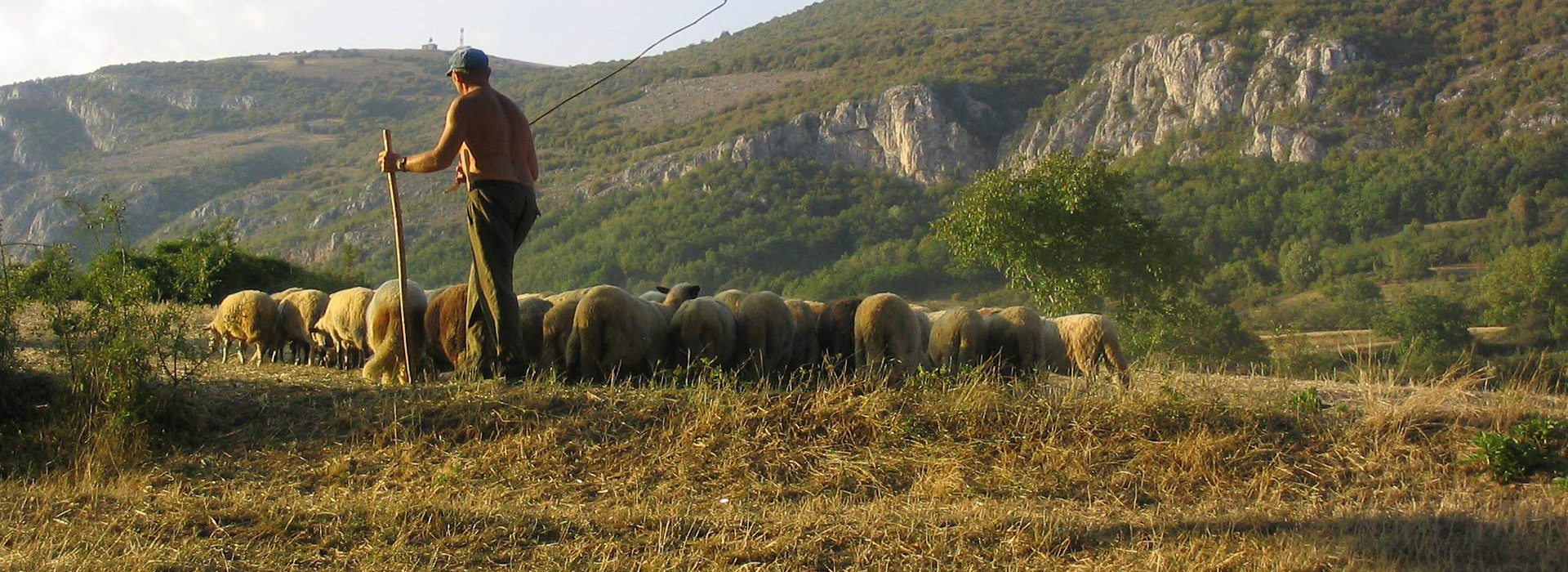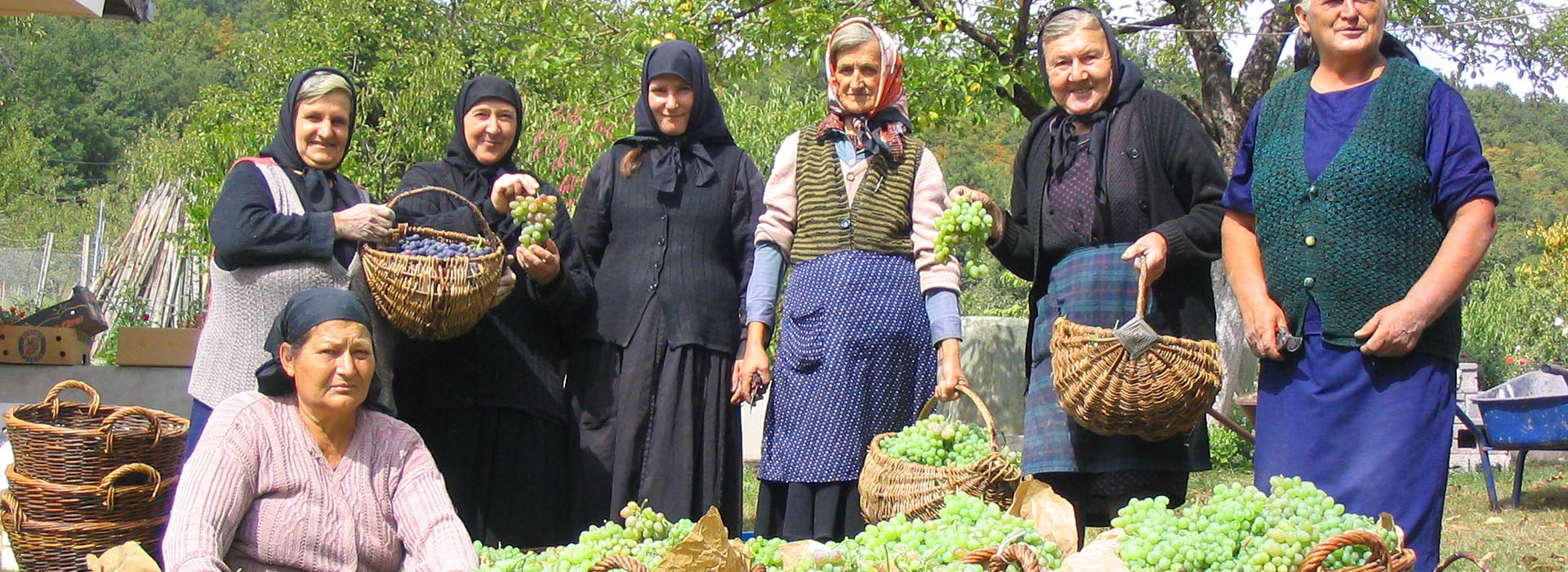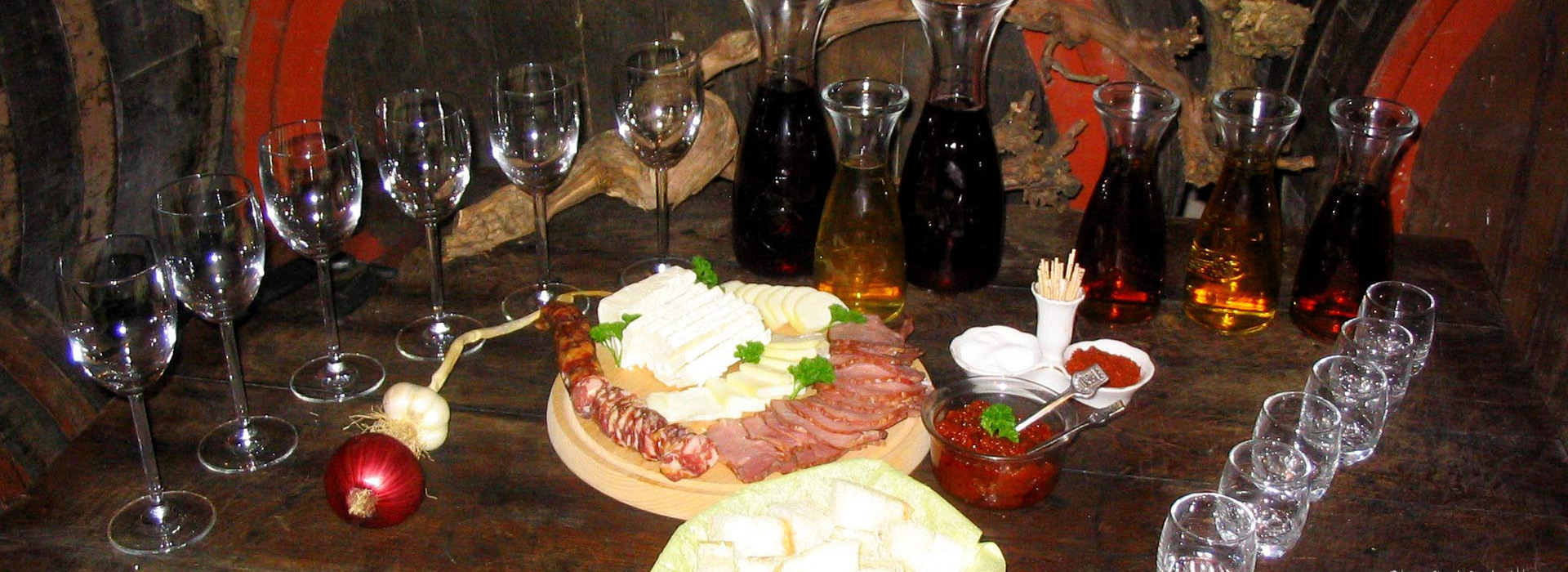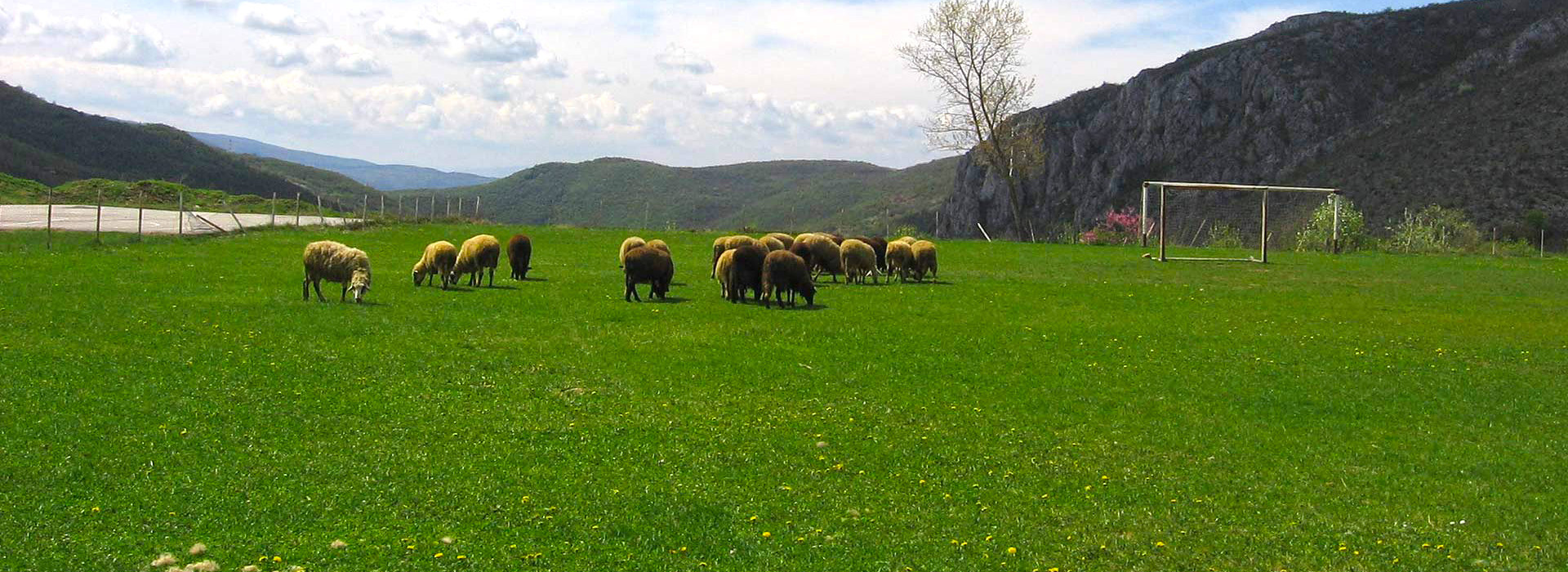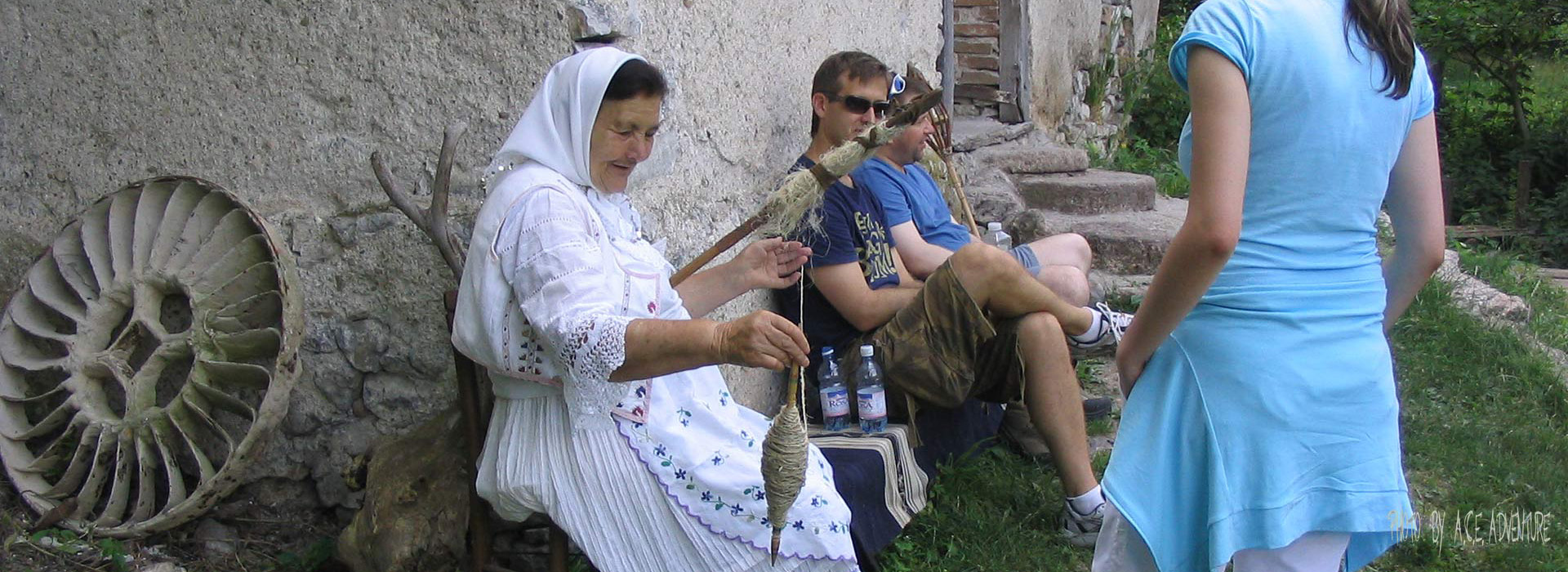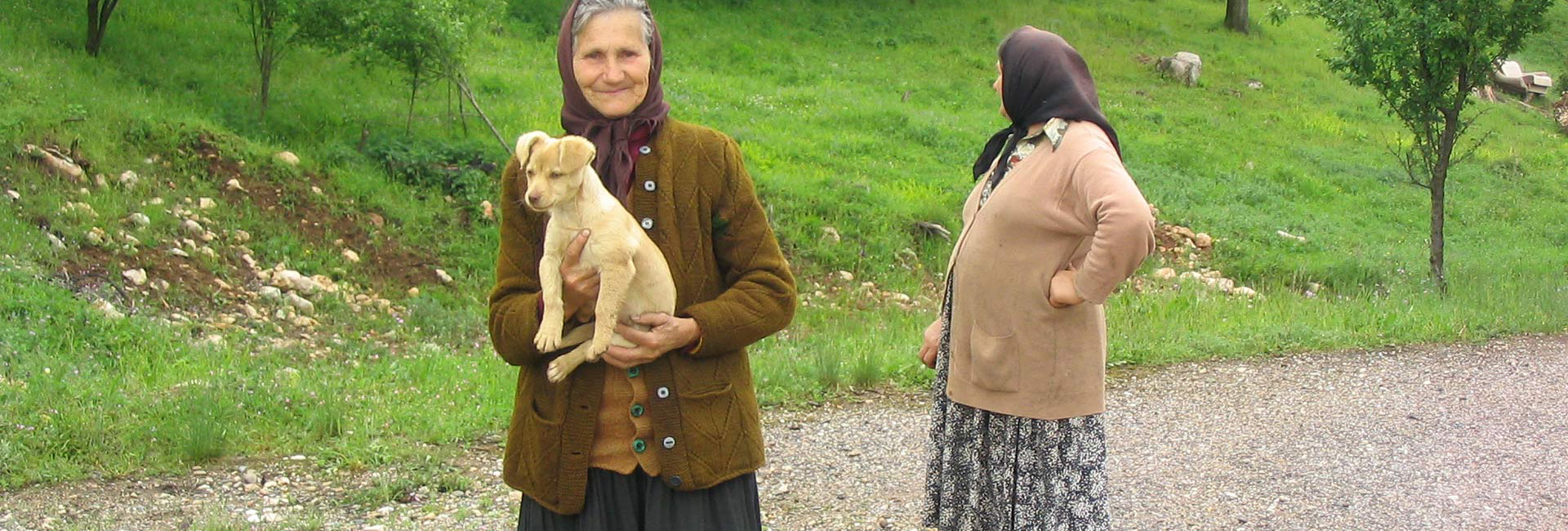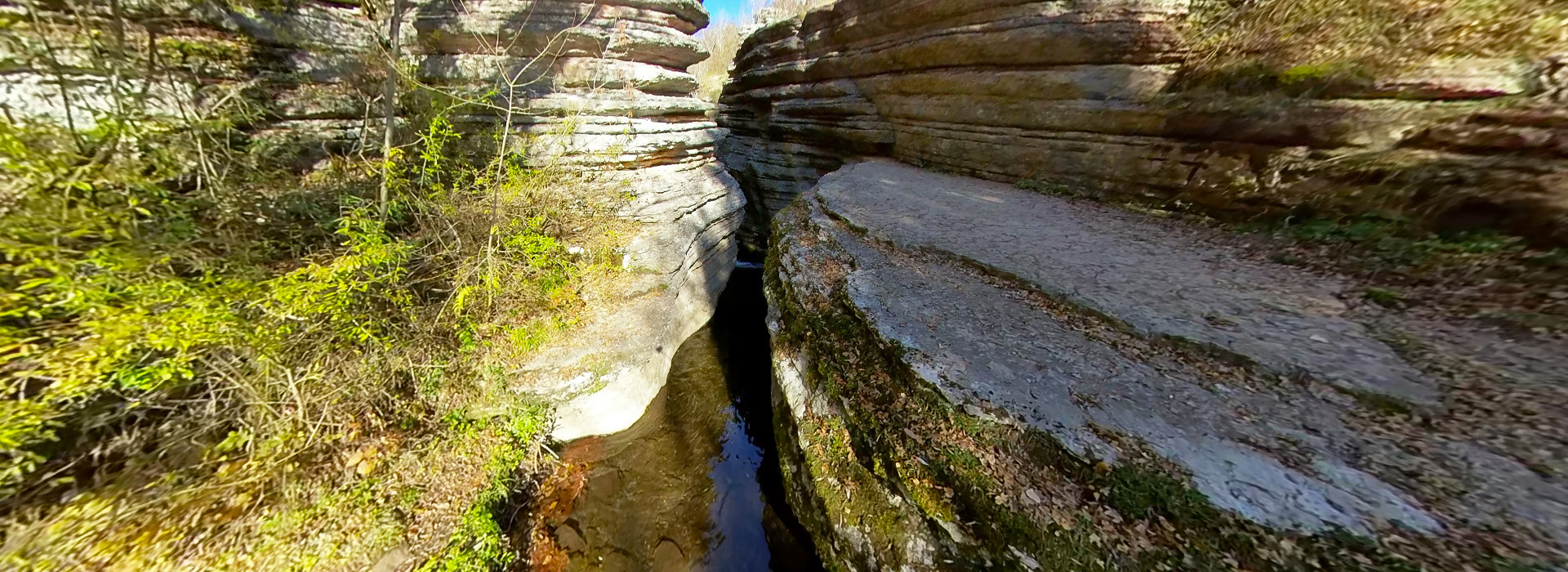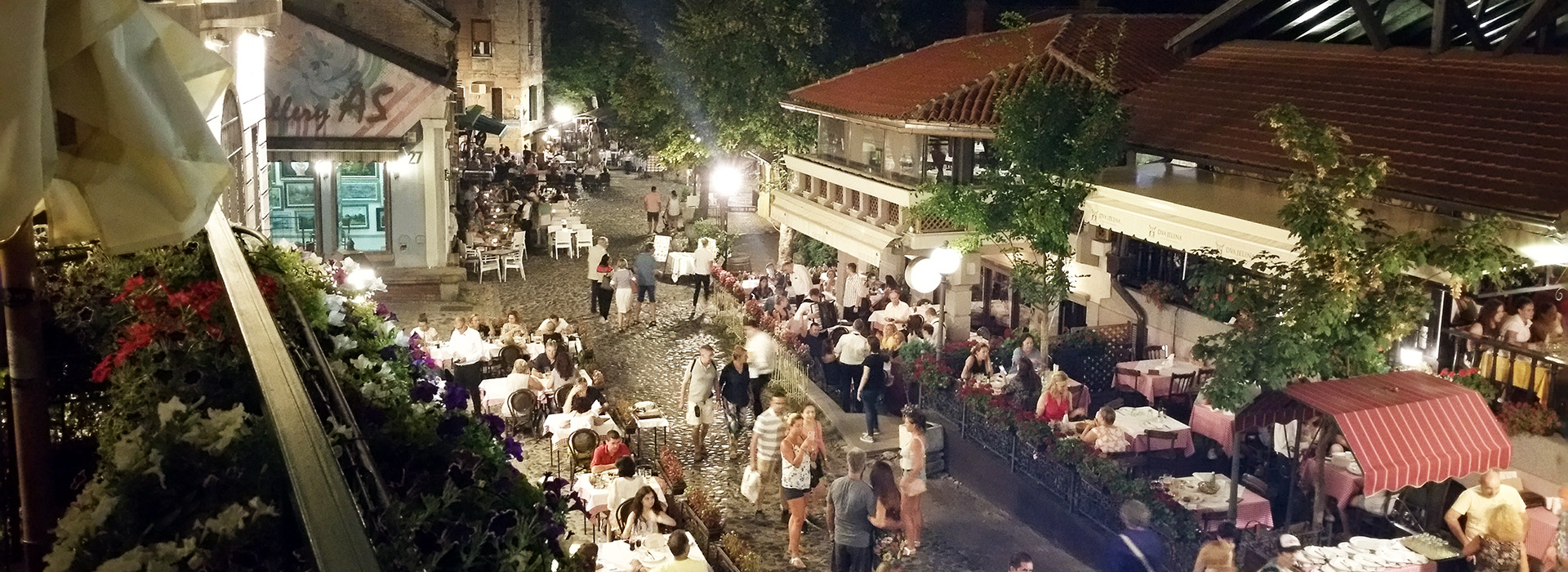
Walking Serbia guided holiday
Explore the hidden corner of eastern Serbia on foot and meet locals, their history and culture and discover its natural gems
8 days / 7 nights walking guided holiday in Eastern Serbia while staying in the hotels of very great comfort- from 1370 EUR
-
Explore the region still undiscovered by mass tourism
-
Use our long hiking experience and ramble the mountains of Eastern Serbia
-
Dine with the locals in their home
-
Meet the knitters of the famous Pirot carpet
-
Discover the places off the beaten tracks. Most of the locals did not discover those places yet
-
We stay in the finest accommodation available in the area. Enjoy comfort and delicious food after activities
-
Travel in a small group. The maximum group size is 15 persons.
-
Have a safe and risk-free booking. We have adopted all our procedures to WTTC (World Travel & Tourism Council), UNWTO (World Tourism Organisation), and local protocols and standards. Our booking and cancellation policy is adapted to new conditions and maximally flexible so you can not lose your money

BLOG STORY
Read more on ACE Adventure blog
3 Things You Shouldn't Forget When Going on a Balkan Adventure Tour
Making the Most of Your Balkan Adventure Tour: 3 Key Tips to Keep in Mind
Walking grade:
Moderate
Daily hikes from 3 and a half hours to 5 hours with the accumulated ascent up to 700 meters
RECOMMENDATIONS FOR EXTENSION
An option to extend your holiday for additional days in Belgrade is possible. Please contact us for the conditions of this extension.
Please read and respect ACE Responsible Tourism Policy.
Book with confidence and risk-free. Please read our new booking and cancellation policy
Itinerary
-
-
Transfer from the airport to the hotel in the city centre. Meeting the tour leader and the group. After introductory briefing free time and dinner.
-
Meals Included: /
Activity Free time on arrival at accomodation.
-
-
-
After breakfast, we take a guided walking tour of the Belgrade old city centre. Starting from Terazije square and the famous Hotel Moskva we take you through the heart of the city and finish the tour on Belgrade Fortress in Kalemegdan Park. The tour lasts 2h30. After free time for lunch, we transfer to Cegar hill above the city of Nis (240km, 2h30). We start a short walk from the 19th century memorial from the First Serbian Uprising against the Ottoman Empire to the Latin church above Gornji Matejevac village. The Latin church is built in the 11th century and it is one of the most beautiful churches in the surrounding area of Nis. From there we drive (20min) to the hotel in Nis.
-
Meals Included: Breakfast, Dinner (in a local restaurant)
Activity Walking city tour 2h30 in the morning and in the afternoon 1h30 walking, ascent 110m, descent 40m
-
-
-
The city of Nis is located in a valley surrounded by mountains Suva, Svrsljiske, Selicevica and Kalafat.
Suva mountain has the shape of a horse-shoe and is one of the most beautiful mountains in Serbia. Its summits offer spectacular views of the city of Nis and the surrounding area. After breakfast, we transfer to Suva mountain and Bojanine Vode (40min). We walk on Franc’s pathway to get to one of the most scenic summits on Suva Planina- Sokolov Kamen 1.523m (the Falcon’s rock). After picnic lunch at the top, we return via Devojacki Grob saddle back to the Bojanine Vode.
Drive back to the city of Nis. Before we indulge in food enjoyment we visit the Bubanj memorial located in the suburb of the city. The memorial park stands on the site of one of the largest mass executions of the Second World War.
Tonight we have a special experience- a dinner in a local home. -
Meals Included: Breakfast, picnic lunch, Dinner with locals
Activity Walking 4h30, ascent 690m, descent 690m
-
-
-
Only 30min drive from the city of Nis we arrive in the village of Sicevo what is our starting point for a hiking tour to the summit Gradac on Svrljig Mountain (1.062m).
Sicevo is wine-growing centre, and there are vineyards stretching up the hillside all around the village. The vines, the rustic quietness and stone houses of the village, all give the impression that you have momentarily been transported to Provence. We will have a picnic lunch on the summit and walk back to Sicevo where we visit local wine cellar and taste some wine and brandy.
On the way back to the hotel we stop and visit a Scull Tower built in 1809 by Turkish general Hurshi Pasha out of skulls of defeated Serb rebels.
Free dinner. -
Meals Included: Breakfast, picnic lunch
Activity Walking 4h, ascent 620m, descent 620m
-
-
-
We leave the city of Nis and drive east towards the Bulgarian border. The next two days we explore the Eastern border of Serbia and Balkans Mountains. Today we walk to Koziji Kamen (the Goat’s rock) a view point above Zavojsko lake and a scenic gorge Rosomacki Lonci carved in the rocks by the same name river. The walls of the hollowed gorge are made of delicate limestone layers. Limestone shale sediments contain many types of ammonites, extinct marine cephalopods that often had spiral shells.
We spend night in the heart of the Stara planina (Balkan Mountain) in a guesthouse at the elevation of 730m. above the sea level. -
Meals Included: Breakfast, picnic lunch, dinner
Activity Walking 3h30, ascent 170m, descent 170m
-
-
-
Amazing hiking day on Stara planina. After a short ride to the village of Dojkinci, we hike to the remote village of Gostusa. Due to its remoteness, lack of infrastructure and road, Gostuša has remained intact. Interesting and uncommon, the story of Gostuša spread across the borders of Serbia and attracted the attention of experts worldwide. The reason for this lies in the houses built from stone, mud and other natural materials that the locals found in the surroundings of Stara planina. From Gostusa we transfer to Pirot (45min)where overnight.
-
Meals Included: Breakfast, picnic lunch, dinner
Activity Walking 5h, ascent 560m, descent 760m
-
-
-
A relaxing day before returning home. We start the day with a visit to a local ethnographic museum. From the museum, we go to the local kilim weaver. Pirot kilim is a unique, authentic and highly regarded brand of flat tapestry-woven carpets or rugs, made of pure sheep's wool from Stara Planina. It is dyed with natural colours and known for a long enduring. It is made as a single piece, has 28 weave lines in 1cm and both sides of the rug can be used. Its colours, patterns and ornaments are unique: 96 of them are geographically protected. Pirot kilim is made exclusively in Pirot, Serbia.
From Pirot we transfer (2h) to the 14th-century Christian Orthodox monastery Ravanica.
The monastery Ravanica and its church of the Ascension of the Lord occupy an especially important place in Serbian medieval history, both because of their historical role, and because of their importance for the development of Serbian architecture, ornamental sculpture and painting.
From Ravanica we transfer to Belgrade (2h) for a final dinner in the bohemian quarter Skadarlija. -
Meals Included: Breakfast, dinner
Activity Sightseeing
-
-
-
A transfer to Belgrade airport (30min) where the trip ends
-
Meals Included: Breakfast
Activity Transfer
-
Tour Information
-
BELGRADE
Begrade’s gritty exuberance makes it one of the most happening cities in Europe. While it hurtles towards a brighter future, its chaotic past unfolds before your eyes: socialist blocks are squeezed between art nouveau masterpieces, and remnants of the Habsburg legacy contrast with Ottoman relics.
It is here where the Sava River meets the Danube (Dunav), contemplative parkland nudges hectic urban sprawl, and old-world culture gives way to new-world nightlife.
Grandiose coffee houses, quirky sidewalk ice-creameries and smoky dens all find a rightful place along Knez Mihailova, a lively pedestrian boulevard flanked by historical buildings all the way to the ancient Kalemegdan Citadel, a crown of the city. Deeper in Belgrade’s bowels are museums guarding the cultural, religious and military heritage of the country. Josip Broz Tito and other ghosts of the past have been laid to rest here. ‘Belgrade’ literally translates as "White City", but Serbia’s colourful capital is red hot.NIŠ
Since the days of the Roman Empire the city of Nis has been at an unofficial boundary between East and West. The Ottomans had control of Niš from the middle ages to the 19th century, and left an imperious fortress that still has a 16th century mosque inside.
Like Belgrade, Niš seems to make the most of what it does have – the Turkish fort by the river has been developed into a pleasant park, and some of the original buildings have been converted to galleries and smart café-restaurants. The main shopping street has been pedestrianised to become the route for a crowded korso every evening. At the end of this is Kopitareva (Kazandzijsko sokace – ‘Tinkers’ Alley’), a narrow alleyway filled with bars, cafés and restaurants. Aside from the Turkish fort, the city’s number one tourist ‘attraction’ is probably the grisly Cele kula (the Skull Tower). It is also worth visiting the Roman archaeological site Mediana, Bubanj- the WW2 memorial site and Red Cross concentration camp.
As well as a few interesting historical sites, the city has quite a lot else to offer: a number of excellent but inexpensive restaurants, a relaxed atmosphere, good places to stay and a nearby spa resort.LATIN CHURCH
The Latin church is located on Metoh hill, above the city of Niš. It is an 11th-century Orthodox church dedicated to the Holy Trinity. Known as the Latin Church, the building got the name from Dubrovnik merchants (called “Latins” by the locals for their Catholic faith) who used it for religious ceremonies in the 16th century. It is one of the few buildings from the pre-Nemanjić dynasty epoch (Medieval Serbia), when the region was still part of the Byzantine Empire.
The church was built from stone and bricks and the facade decorated with stone ornaments. There are no traces of interior decorations and frescoes remaining, but it is known it was painted in 1870, including with a frescoes depicting a life-size figure of famous Serbian medieval knight Miloš Obilić. The architectural style of the church resembles the old Byzantine churches: stone, with brick arcades and one ancient Roman tombstone embedded in the wall. The churchyard is a necropolis of the prominent Dubrovnik merchants and diplomats from that time. During the Ottoman conquest, it was the only remaining church in the area, as all others were converted into mosques.
The church offers spectacular views on the surrounding area, it overlooks the nearby villages, forests and mountains.CEGAR HILL AND SCULL TOWER
The year 1809 marked the turning point in the course of the First Serbian Uprising against the Ottoman Empire (1804-1813). The outnumbered rebel army faced a 36,000 strong force of Turkish imperial guards near the strategically important southern city of Niš. Rather then surrender or flee they decided to put up a desperate last stand at Čegar Hill. Faced with imminent annihilation, the rebel commander Stevan Sinđelić in an act of desperation fired a shot into a gunpowder keg at the fully stocked gun powder room, blowing up his entire army as well as wiping out enemy soldiers who were already flooding the rebel trenches.
Deeply angered by the rebel force’s actions, the Turkish commander Hurshid Pasha decided to teach a grim lesson to the Serbian nation. The bodies of the dead rebels were mutilated. Their skins were pealed off their decapitated heads, stuffed up with straw, and sent to the Imperial court in Istanbul as proof of Turkish victory. The skulls were used as building blocks for a tower built by the main road at the entrance of the city. A warning to the local populace of an impending fate to any potential future rebels. In total, 952 skulls were used. In its original form, the tower stood 15 feet high and 13 feet wide. Skulls were arranged in 56 rows, with 17 skulls in each row, at each side of the tower. The skull of rebel commander Stevan Sinđelić was placed at the top. This gruesome edifice, left a deep scar in the Serbian national psyche. However, it failed at its purpose. The Serbs rebelled again in 1815, this time successfully, driving off the Turks and winning independence in 1830.
In the years immediately following the building of the tower, the families of deceased rebels chiseled away some of the skulls in order to give them proper funerals. Today 58 skulls in total remain in the tower.BUBANJ MEMORIAL
Bubanj Memorial Park marks and honors the location of one of the most horrific mass executions of the entire war, where more thаn 10,000 Serbs were taken prisoner, gathered and unceremoniously shot by invading German forces.
Estimates of the brutal event’s toll range between ten and twelve thousand lives lost to the execution. The majority of the victims were citizens оf the Serbian city of Niš, which is where the memorial park іs located.
Bubanj Memorial Park is at once a stark and empty locale meant to inspire reflection and honor, but also a functioning public park, complete with memorial trails and monuments. At the park’s center, a 23 x 2.5 meter marble monument consisting of five separate monoliths abstractly symbolizing the progression of the war and its effect on the local populace, moving from German invasion and execution squads to Serbian resistance and eventual victory.SUVA PLANINA
SUVA PLANINA (Dry Mountain) is one of the most impressive mountain ranges in Serbia. The massif of Suva Planina is 35 km long and it is a last Western part of Balkan Mountains system which after that continue to the Rodopi mountain system. The highest peak of Suva Planina is Trem (1810 m) peak with its high and impressive vertical rocky wall dominate more than 1000 m above the Kosmovac village. The north side of Dry mountain is very steep with deep crags and rich beech forest below. On the other hand, south side of Dry Mountain is smooth, but bare-wooded. Farther east of Trem peak (1810m) outspreads the large high-lend plateau. Composition of Dry Mountain is primary lime stoned and most of the mountain range above 1500m is dry without any water.
Two peaks are most impressive and recognizable. That are Trem and Sokolov Kamen which are separated and connected with Devojački Grob (1311 m) pass.SVRLJISKE PLANINE
Slightly lower than its neighbor Suva Planina, Svrljiske planine are nestled between the most beautiful gorge in Serbia- Sicevacka Klisura and the upper flow of the Svrljig Timok. The composition of the mountain is primary lime stoned. The lower parts of the mountain slopes are covered with vineyards and orchards, which at slightly higher altitudes change the fields of thyme and sage, which are intoxicating with their scents.
SIĆEVO
Sicevo is wine-growing centre, and there are vineyards stretching up the hillside all around the village. The vines, the rustic quietness and stone houses of the village, all give the impression that you have momentarily been transported to Provence.
STARA PLANINA (BALKAN MOUNTAINS)
Stara planina (the Balkan mountains), after which the Balkan Peninsula was named, extends 550 kilometres across its central part and connects Serbia and Bulgaria.
Endless stretches of untouched nature, vast mountain pastures and forests rich in forest fruit and herbs, picturesque villages and interesting folklore. That is the true picture of Stara planina, one of the most beautiful and most authentic nature reserves.
It is a wonderful world of peaks, waterfalls, canyons, gorges, caves, connected with numerous hiking trails.GOSTUSA- THE STONE VILLAGE
Interesting and uncommon, the story of GostuSa spread across the borders of Serbia and attracted the attention of experts worldwide. The reason for this lies in the houses built from stone, mud and other natural materials that the locals found in the surroundings of Stara planina. The houses were built without mortar or any other binding material, but with the technique called “suvozidica” (roughly translated: drywall or dry-build). It means that the base material isn’t tiles but stone plates. Therefore, all buildings from their base to their roofs are made from stone. A great deal of craftsmanship, experience and hardwork are required to build such a house. This technique has been used in GostuSa for centuries and the results speak for themselves. You can see them in the houses that don’t crumble under the decay of time even though they are old and run-down. And that’s exactly what makes them so unique, rare and a thing you simply have to witness and experience.
PIROT AND PIROT KILIM
Pirot was once the most important rug-making centre in the Balkans, located on a caravan road between the Middle East (among the most famous kilims are the ones from Persia, Afghanistan, China and the Caucasus) and Europe, became a famous centre for this ancient weaving technique. In the 16th century, when rugs were made exclusively for domestic needs, the kilims were simple and mostly uncoloured.
The Kilims of Pirot were usually used for covering floors, walls, and to be used as curtains, for bedspreads and for covering parts of furniture. Originally, these rugs were only an object of use, but slowly they became a symbol for heritage and were an inextricable part of the region in which they were created. Kilims were given as a gift only on special occasions – they decorated the salons of the Serbian dynasties of the Karadjordjevic and Obrenovic and rulers used to offer them to foreign diplomats, as a valuable gift and a unique souvenir from Serbia.
The most important ingredient for a good quality kilim is wool (obtained from the sheep from the Stara Planina). Only good quality wool is a guarantee for a long duration, a nice appearance and a high-quality weaving.
The sheared wool gets classified by fibre length and then washed in boiling water, rinsed out, dried, bleached and dyed. By spinning the precious wool is transformed into yarn. Pirot kilims with some 122 ornaments and 96 different types have been protected by geographical indication in 2002.RAVANICA
Built during the 1370s, Ravanica is the main endowment of the famous Serbian Prince Lazar. A monastery such as Ravanica once was, with church, refectory, cells, hospital, farm buildings and fortifications, would have been built over a period of years. It is quite certain that the building of the entire monastery lasted at least from 1375 to 1384.
In June 1389 Prince Lazar was killed fighting against the Turks in the tragic Battle of Kosovo, and was very soon canonized (in 1390/91) by the Serbian Church and his body was carried from Kosovo to Ravanica.
Ravanica, where Lazar`s relics rested, became a center of pilgrimage and the focal point around which developed the cult of the martyr Prince and the heroes of Kosovo who had fought with him.
Within the Monastery complex there is a monastery store with herbal preparations, balms and other products made by monks of this Monastery. -
We use the finest accommodation available in the area. During this trip, we stay 6 nights in carefully selected 4* hotels and one night in a comfortable guesthouse located in the heart of the Balkan Mountains. We pay special attention to the choice of food so you can enjoy great choices of local specialities. One night you will have a chance to dine with a local family in the city of Nis, If you have some dietary restrictions we will be happy to adapt our menu to you.
-
-
Transfer from Belgrade airport to the hotel. Regardless of your arrival time, a private transfer will be organized for you.
-
Seven nights (double, twin or single rooms): six nights in 4* hotels and one night in a guesthouse on Stara planina (the Balkan Mountains)
-
Seven breakfasts, five dinners, four lunches
-
Guiding service of English, French or German -speaking ACE tour leader
-
Walking city tour of Belgrade on day 2
-
All transfers during the trip as described in the itinerary
-
Snacks and refreshing drinks during the hiking tour
-
Wine tasting in Sicevo village
-
Entry tickets for Skull Tower, the ethnographic museum in Pirot
-
Transfer from the hotel in Belgrade to Belgrade’s airport. Regardless of your flight time, a private transfer will be organized for you
The following services are included in the price:
The price is based on double room occupancy.
Single room supplement 190Euros and guarantees the single room accommodation during the whole trip
The tour is available all year round
-
-
-
Travel Information
All distances in Serbia are given in kilometers. 1 mi=1,61 km, 1km =0.62mi, 1ft=0.3m/ 1inch=2.54cm
Weather Information
Weather is difficult to forecast but, normally, Serbia has a continental climate. Autumn is often with extended periods of warm , sunny weather. The coldest month of the year is January with average temperature a little bit over 0˚C. Spring is usually very pleasant with daily temperature between 15˚C and 20˚C and occasional rain and showers. The hottest months are July and August with average temperature about 23˚C and daily temperature above 30˚C. The country as a whole receives an average precipitation of between 600mm and 800 mm annually in the plains- about the same as that of southeast England – and about 800mm and 1200mm in highland regions. In July and August we usually have some days with daily max temperature about 35C.
Packing suggestions
Casual seasonal clothing is recommended for most occasions. You may wish to bring a sweater and some jacket even in summer, comfortable hiking shoes, rain jacket, plus trainers or sandals for relaxing. You should also bring some water bottles, sun protection cream (high protection factor 30 and above), insect repellent, sunglasses, sun hat, and a lip salve with sun protection. Also bring a swimsuit for swimming opportunities on the trip (the Gostoljublje has a open air swimming pool).
General Information
Currency and Exchange
Serbian Dinar is monetary unit and consists of 100 paras. For 1 Euro you can get 115,00 dinars (current exchange rate). In all cities and towns you can find change offices. Most of them have a good exchange rate and do not charge commission. Most of change offices are open from 8am to 8pm. ATM machines are available in all big cities but also in smaller towns such as Sombor, Apatin, Backa Palanka, Donji Milanovac and Kladovo and they require a PIN number. For arriving by plane, there is an ATM at the arrivals hall (downstairs) of Belgrade’s Surcin Airport, which will accept VISA, VISA Electron, VISA Plus, MasterCard, Maestro and Cirrus cards. Some of the restaurants and shops accept credit cards (Visa, MasterCard, American Express, Diners). The most widely excepted credit cards are VISA, closely followed by MasterCard. Traveller’s cheques are a little harder to change: Branches of Raiffeisen Bank or Komercijalna Banka are probably the best bet but beware of high commission charges. For Eurocheques, branches of ProCredit Bank are probably the best bet. Neither personal nor travellers’ cheques can normally be exchanged for goods in shops, so credit cards make far more sense.
Banks are generally open from 08:00 to 19:00 on weekdays and from 08:00 to 15:00 on Saturdays.
In smaller towns it is useful to have enough cash. Foreign nationals may take a maximum of 120.000 dinars in or out of the country.
Most of the shops are open from 9am to 9 pm and remain open through lunch.
Restaurants: The main meal is taken at lunch from 1pm to 3pm. Restaurants serve dinner in the evening from 8pm till 11pm.Electric Current
In Serbia electric current is 220 volts, 50 HZ. To use American or British electrical appliances a plug adapter is necessary. Electric plug used in Serbia is type C (the same one is in use in Croatia, Belgium, Egypt, Italy, Hungary, Luxemburg, Netherlands, Norway, Bulgaria, Romania, Switzerland, Turkey, Vietnam, etc.
Telephone
Telephone plug used in Montenegro, Croatia, is US RJ-11 phone plug
Telephoning Home
Most of the telephone cards (AT&T…) do not work here. You can telephone from Post Office and pay after the call.Most of the telephone cards (AT&T…) do not work in Serbia. You can telephone from Post Office and pay after the call or buy a telephone card (a phone debit card) for public phones. There are two types of telephone cards and both could be bought at tobacco shops and post offices. Ask for “Halo Kartica” or “Halo Plus Kartica” card. Halo Kartica is sold in two versions: 200, 300 dinars. The card allows you to make local and international calls by inserting the card into the slot of all public phones. One minute with most of EU countries costs about 22 dinars.
Halo Plus Kartica is sold in 600 dinars version. The card allows you to use both public and private phones by entering code from the card. There are three types of Halo Plus cards: one for telephoning to ex-Yugoslavia countries, one for EU and card for America, Canada and all other countries out of Europe. International calling rates for Halo Plus cards are much lower then using other telephoning option.
To make a direct international call, first dial 00 (code to access international line) then the country code, the area code and local number. The country code for Australia is 61, Norway 47, Great Britain is 44, USA and Canada 1, France 33, Germany 49. To make a national call just dial area code and local telephone number. City codes Belgrade 011, Nis 018, Novi Sad 021. Important phone numbers: Police 192, Fire department 193, Ambulance 194.
ACE Emergency phone (24h available) +381 (0)64 24 76 311.
Language
Official language is Serbian but English is widely spoken specially in a bigger towns. Both Cyrillic and Latin Alphabet is in used.
INSURANCE
Travel insurance is highly recommended for all clients whilst on a tour organized by ACE. Clients together with their personal property including baggage are at all times solely at their own risk. Clients are wholly responsible for arranging their own insurance. Clients are responsible for ensuring that they are in possession of private Travel Insurance with protection for the full duration of the tour in respect of at least medical expenses, injury, death, repatriation, cancellation and curtailment, with adequate cover. Clients making their own arrangements should ensure that there is no exclusion clauses limiting protection for the type of activities included in their tour. Clients should satisfy themselves that any travel insurance is what they require and should arrange supplementary insurance if need be.
Responsible Travel
Before you come on the tour please read and respect ACE Responsible Tourism Policy
Personal Expenses
MEAL PLAN
Meals other than those included in the itinerary are paid for separately by traveler. Examples of some costs are provided below:
-
Coffee/ Tea - 0.8 Euro
-
Soft drink - 1 Euro
-
Bottle of beer - 1-2 Euro
-
Bottle of wine - 5-15 Euro
-
Two course meal - 8-10 Euro
-
Three course meal - 12-15 Euro
Local fares in small towns
Tipping
Although entirely voluntary, tipping is a recognized part of life in this part of the world. Gratuities for the staff of the ACE Adventure is discretionally but always appreciated by the staff and we will be happy to provide guidelines.
-
-
Photos
Dates & Prices
Date Start
Date End
Duration
Availability
Price










